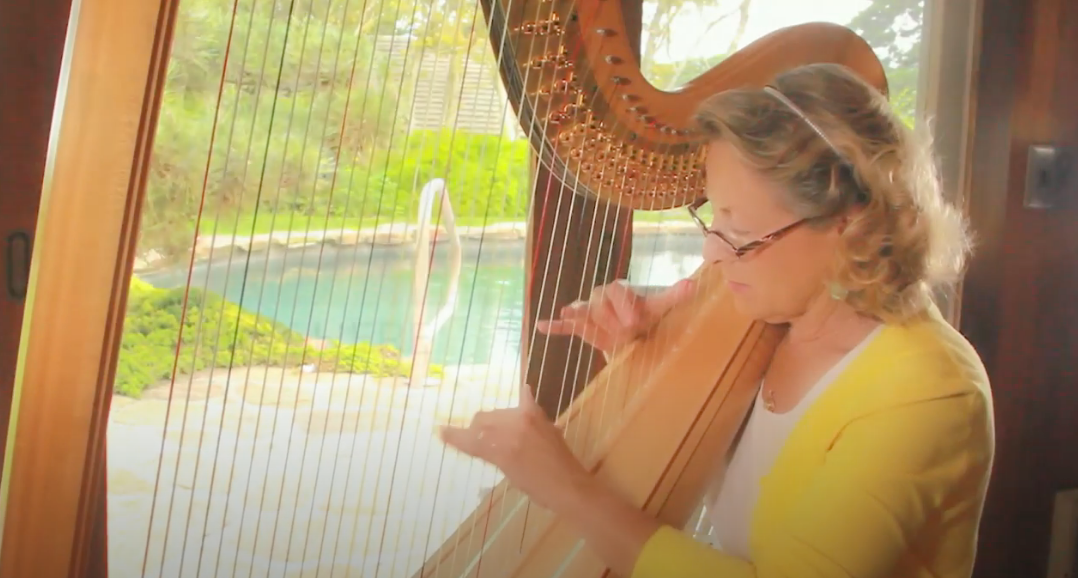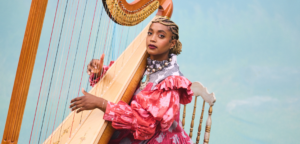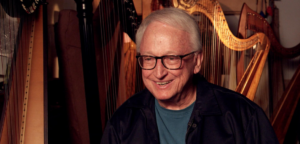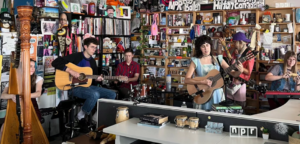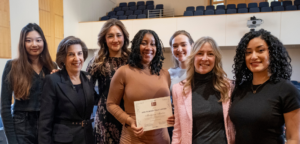A Harpist’s Guide to Effortless and Organic Playing, a new method book by Heidi Lehwalder, is now available from Vanderbilt Music. Lehwalder, who was the last student of legendary pedagogueCarlos Salzedo, gained fame in the harp world by winning a prize at the International Harp Contest in Israel when she was just 12 years old. We reached out to Lehwalder to learn more about her new book.

What do you consider unique about your method book? What’s distinctive about your personal approach to the harp?
I have always felt my approach to playing the harp was of a holistic nature. Everything is interconnected. The physical aspects begin at the groin, working up through the spine, back, shoulders, and down through the arms, to the hands and fingers. It is all one and not limited to “only” slight arm use along with the hands and fingers.
Studying Tai Chi was an eye opener because I believe the basis of this art form is so closely aligned with achieving a natural flow when playing the harp. Strength, stamina, sound quality, control, speed, articulation, flexibility, and balance are all inclusive here. Getting away from the strings while breathing into each note frees oneself from needless tension. Keeping the body open is essential.
What was the biggest challenge in writing this book?
The obvious challenge here was to put thoughts into words in a clear and precise way for harpists to understand my concepts without the luxury of the in-person lessons where questions could be asked. The rewards came from sharing the book before published with some harpists whom I knew would be honest with me. The feedback was positive with some excellent suggestions offered for clarifying in a few areas.
Who were your first teachers?
My first teacher was the brilliant harpist and musician Lynne Wainwright Palmer. What a phenomenal mentor she was. When she was a student at the Curtis Institute of Music, she was awarded outstanding graduate, over fellow graduates Leonard Bernstein and Leonard Rose.
At 10 years old, I went to Camden, Maine, in the summer months to work with Carlos Salzedo. During this time, he asked me to enter the 2nd International Harp Contest in Israel, which would take place two years later in 1962. The following summer I returned to Camden with the repertoire learned and we worked intensely with long sessions every few days. He died the day before what would have been my last lesson for the summer. It was a devastating loss!
I would like to mention that Carlos Salzedo obviously had a major impact in my life, but I do not consider myself a devotee of all aspects from this school of harp playing. When we worked together, he let me play my own way. In all honesty I feel his ideas on harp position and their execution have changed quite a bit since his passing.
What other influences shaped your approach to harp technique and playing?
The clear answer would be dance. As soon as I finished my practice, I would be in our family recreation room dancing. This instilled in me a deep appreciation for the pulse, rhythm, and the accompanying visual movements that matched the music. For many years, I traveled with a little record player, so I could dance in my hotel room after performances.
How do you balance the standardization of a method book with the individual needs of a student?
I think this totally depends on the method and to what degree a relaxed approach is stressed. There are certainly exceptions where either a physical condition or an oddity in hand shape can cause the student some additional challenges. Also, there should always be the need for self-expression, but within the discipline of a method framework based on the foundation of physics and relaxation.
Harp technique provides the tools for many aspects of musicianship. What do you focus on attaining musically through your harp technique?
Pulse, wave, and form: these three aspects represent the rhythm, the expression, and the visual. All three components are necessary for any musician to utilize their technique and musicality to the fullest advantage. If one approaches the instrument in a circular, rounded manner, which is open and free from clinging, coming down and into the strings, rather than “at” the strings, this is the first step in achieving the “trinity,” as I call it.
What themes do you address in your book?
The answer to this is in part mentioned in the former question, combined with stressing the importance of the visual (form). We know the harp is the most visual of all instruments and the only one to have both hands free to show what musical expression we wish to impart. I believe this is too often overlooked or too often over-indulged, with the focus being on ourselves rather the music at hand. We must always recognize that we have the rare luxury of projecting double the impact to the listener when our mannerisms are in line with the musical content.
What is the most important thing you want harpists to gain from reading your book?
I hope that harpists find some helpful hints for achieving whatever aspects matter most to them—whether it be depth and fullness of sound, a fluid technique, clean articulation, reexamination of body mannerisms, imparting visual concepts, or being able to consistently obtain a more relaxed and organic approach with the instrument. Let the harp play itself.
You can read Harp Column’s cover interview with Lehwalder in our July/August 1999 issue. To learn more about her approach to the harp, visit Lehwalder’s website.





